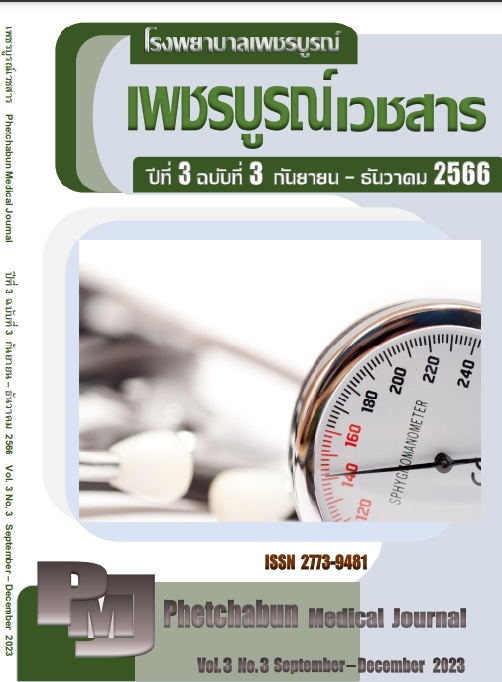Comparison of injuries from chest compressions between mechanical versus manual chest compressions in cardiopulmonary resuscitation patients with forensic autopsy
Keywords:
Cardiopulmonary resuscitation (CPR), injuries related to resuscitation, autopsy, LUCASTM2 chest compression systemAbstract
Mechanical chest compressions are widely used, however, injuries associated with mechanical chest compressions are currently controversial. The objective of this research was to show the comparison of injury rates between mechanical versus manual chest compressions in patients who underwent cardiopulmonary resuscitation and performed forensic autopsies at the Department of Forensic Medicine, Phetchabun hospital. According to the retrospective study of data from forensic autopsy records and in-hospital records for evidence of injury related to chest compression, there were 47 cases of patients who died after unsuccessful resuscitation by mechanical chest compression machines, and another 35 cases of patients who died after manual chest compressions, totaling of 82 cases. Data were collected from forensic autopsy records, and hospital treatment records to find evidence of injuries related to chest compressions in patients receiving resuscitation between July 2020 and September 2023. Data were analyzed using frequency, percentage, mean, standard deviation, independent t-test, chi-square test, Fisher's exact test, and multiple logistic regression.
It was found that the group who received the mechanical chest compression machines detected a greater effect on injury than the group who used the manual chest compression (adj. OR=180.4, 95% CI= 8.94-3638.50, p<0.001). In addition, the increasing age had a greater effect on injury detection (adj.OR=1.1, 95%CI= 1.03-1.18, p<0.007). Skin and muscle injuries, sternum fractures, and rib fractures were more significant incidences (p>0.05). The injury incidence was laceration of organs and large blood vessels that was detected in the group receiving the mechanical chest compression machine; however, this incident was not significantly different between mechanical and manual chest compressions (p>0.05). In summary, this research provided a preliminary map to consider chest compression-related injuries in the Thai population. Therefore, research should be conducted in a larger population and more detail on the relationship between injuries and patient outcomes, in terms of pain and recovery to provide more information on the safety of using mechanical chest compression machines in patients undergoing cardiopulmonary resuscitation.

Downloads
Published
How to Cite
Issue
Section
License

This work is licensed under a Creative Commons Attribution-NonCommercial-NoDerivatives 4.0 International License.


